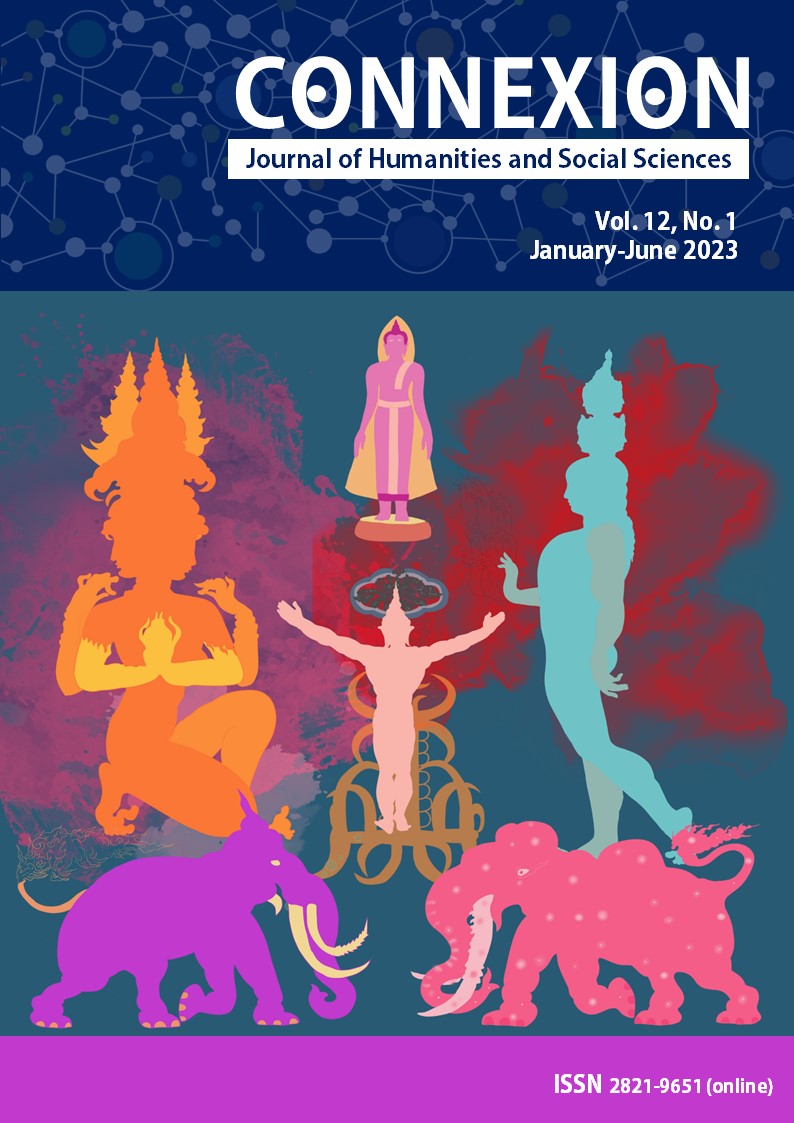The Pre-depressive States: Language and Depression Subjectivity Claims of Twitter Users
Main Article Content
Abstract
This research aims to analyze linguistic features that convey depression and depression subjectivity claims expressed by Twitter users. The primary objective is to answer key questions: (1) Which set of pre-depressive events do patients affirm as contributing factors? (2) If depressed patients seek social isolation and confront existential crisis, why do they express their subjective experience of depression on Twitter and how does such communication become necessary for their constructed avatar in the social media? The data comprised 300 textual samples, and the analytical framework was based on the Speech acts theory. The findings identified three primary categories of speech acts; representatives, expressives, and commissives. Preparatory conditions were identified preceding events, encompassing the influence exerted by individuals in the surroundings and the social norm. Furthermore, propositional and essential conditions allowed depressed patients to redefine awareness of being victimized and emotionally vulnerable. They also officially acknowledged their claims of patient subjectivity. Concurrently, within the communication process, opportunities emerged for other users to validate certain facets of the value attributed to depressed individuals, which might not be apparent in offline interactions.
Article Details

This work is licensed under a Creative Commons Attribution-NonCommercial-NoDerivatives 4.0 International License.
Copyright
Connexion: Journal of Humanities and Social Sciences has an exclusive right to publish the accepted articles in any form. However, the author retains the following rights:
1. The right to the ownership of the article;
2. The right to use all or part of the article in his/her other works;
3. The right to re-produce the article for personal use or for use in the author’s organisation, in which case the author must obtain permission from Connexion: Journal of Humanities and Social Sciences;
4. The right to make copies of all or part of the work for educational use or for the author’s use in classroom teaching; and
5. The right to include the work (both the preprinted and printed versions) in an institutional repository.
References
Angkapanichkit, J., Rochanahastin, A., & Intasian, S. (2019) Communication and depression: A survey of depression communication development methods for sustainable quality of life among Thai youth (การสื่อสาร และโรคซึมเศร้า: การสำรวจแนวทางพัฒนาการสื่อสารด้านโรคซึมเศร้าเพื่อคุณภาพชีวิตที่ยั่งยืนของเยาวชนไทย), Bangkok: Amarin Printing. (in Thai)
Bernard, J. D., Baddeley, J. L., Rodriguez, B. F., & Burke, P. A. (2015) Depression, language, and affect: An examination of the influence of baseline depression and affect induction on language, Journal of Language and Social Psychology, vol. 35, no. 3, pp. 317-326. https://doi.org/10.1177/0261927X15589
Bernard, J. E. R. (2018) Depression: A review of its definition, MOJ Addiction Medicine & Therapy, vol. 5, no. 1, pp. 6-7. https://doi.org/10.15406/mojamt.2018.05.00082
Biester, L., Pennebaker, J., & Mihalcea, R. (2022) Emotional and cognitive changes surrounding online depression identity claims, PLoS ONE, vol. 17, no. 12, e0278179. https://doi.org/10.1371/journal.pone.0278179
Butler, J. (1999) Gender trouble: Feminism and the subversion of identity, New York: Routledge, Chapman & Hall.
Chensy, P. (2021) Depression associated role commitment and coping strategies in female patients with depressive disorders in psychiatric outpatient Department King Chulalongkorn Memorial Hospital (ภาวะซึมเศร้า ความผูกพันต่อบทบาท และกลวิธีการเผชิญปัญหาของผู้ป่วยโรคซึมเศร้าเพศหญิงที่มารับการรักษาที่แผนกผู้ป่วยนอก จิตเวชศาสตร์ โรงพยาบาลจุฬาลงกรณ์), Master’s thesis, Chulalongkorn University.
(in Thai)
Department of Mental Health. (2022) Statistics of depression in Thailand 2022 (สถิติการเป็นโรคซึมเศร้าของประเทศไทย 2565), Available: https://mhc13.dmh.go.th/ [1 October 2022] (in Thai)
Jaeger, J., Lindblom, K. M., Parker-Guilbert, K., & Zoellner, L. A. (2014) Trauma narratives: It’s what you say, not how you say it, Psychological Trauma, vol. 6, no. 5, pp. 473-481. https://doi.org/10.1037/a0035239
Kawilanan, S. (2022) Communicative elements and linguistic strategies for commenting on depression pages: A discourse analysis and pragmatics approach (องค์ประกอบการสื่อสารและกลวิธีทางภาษาเพื่อแสดงความคิดเห็นในเพจโรคซึมเศร้า: การศึกษาตามแนวปริจเฉทวิเคราะห์และวัจนปฏิบัติศาสตร์), Journal of Liberal Arts, Maejo University, vol. 10, no. 1, pp. 224-247. (in Thai)
Kupferberg, A., Bicks, B., & Hasler, G. (2016) Social functioning in major depressive disorder, Neuroscience & Biobehavioral Reviews, vol. 69, no. 1, pp. 313-332. https://doi.org/10.1016/j.neubiorev.2016.07.002
Maneenil, A. (2020) Factors influencing depression among late adolescents (ปัจจัยที่มีอิทธิพลต่อภาวะซึมเศร้าของวัยรุ่นตอนปลาย), Master’s thesis, Burapha University. (in Thai)
Sathientharadol, P. (2020) A semantic network analysis of Thai utterances used by depression patients (การวิเคราะห์เครือข่ายทางความหมายของถ้อยคำภาษาไทยที่พบในผู้ป่วยภาวะซึมเศร้า), Journal of Humanities and Social Sciences, Burapha University, vol. 28, no. 3, pp. 116-143. (in Thai)
Searle, J. R. (1969) Speech acts: An essay in the philosophy of language, Cambridge: Cambridge University Press.
Smirnova, D., Cumming, P., Sloeva, E., Kuvshinova, N., Romanov, D., & Nosachev, G. (2018) Language patterns discriminate mild depression from normal sadness and euthymic state, Frontiers in Psychiatry, vol. 9. https://doi.org/10.3389/fpsyt.2018.00105
Song, S. J., Ziegler, R., Arsenault, L., Fried, L. E. & Hacker, K. (2011) Asian student depression in American high schools: Differences in risk factors, Journal of School Nursing, vol. 27, no. 6, pp. 455-462.
Suriyo, T. (2016) The effect of a group counseling program to enhance the social intelligence of adolescents at risk as depression (ผลกระทบของโปรแกรมให้คำปรึกษากลุ่มที่มีต่อการเสริมสร้างความฉลาดทางสังคมในวัยรุ่นกลุ่มเสี่ยงของภาวะซึมเศร้า), Master’s thesis, Srinakharinwirot University. (in Thai)
Teeranon, P., Hantrakul, A., & Paicharoen, N. (2022) A review of studying a role of linguistic features in detecting depression in Thailand (ภาพรวมการศึกษาบทบาทของตัวบ่งชี้ทางภาษาในการประเมินภาวะซึมเศร้าในประเทศไทย), Journal of Humanities, Naresuan University, vol. 19, no. 2, pp. 55-73. (in Thai)
Trifu, R., Nemes, B., & Cozman, C. (2017) Linguistic indicators of language in Major Depressive Disorder (MDD): An evidence based research, Journal of Evidence-Based Psychotherapies, vol. 17, no. 1, pp. 105-128. https://doi.org/10.24193/jebp.2017.1.7


